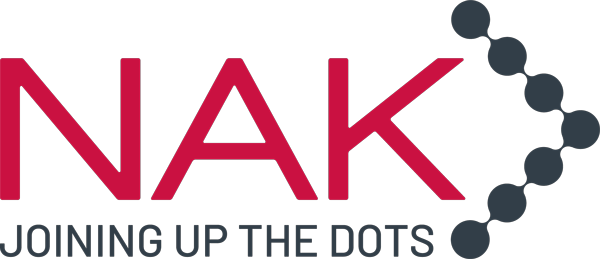The network has become the fundamental critical part of your IT infrastructure. It’s what connects your head office, remote branches, outlets and supports your home workers. However, it is likely to be the area that is causing you the most pain.
When your network fails, your people cannot be productive, you fail to deliver on customer promises and your team bears the brunt of the frustration.
The reality is that as your business becomes more digital there are new and different demands on your network; what it delivers and what your end-users need has diverged, and this is now causing pain. At NAK, we see this every day of the week. Our Network Assessment is designed to quickly identify the disconnect between an organisation’s network infrastructure and the needs of the business, end-users, and customers. Here are the top five issues we commonly see.
1: Outdated Network Topology
Your network was architected to meet a specific set of business needs; however, these needs have changed and are no longer being met by your network topology. Where your people connect to your network will have most certainly changed with more people working remotely or from home. What your end-users are connecting to has also changed – greater use of cloud infrastructure and applications means that backhauling all traffic to your head office is no longer appropriate.
2: Evolution of Non-Standard Chaos
This may sound brutal, but it is so often the case. As requirements have risen over the years, the most appropriate decision has been made to implement specific technology; however, as you step back, you now have a fragmented and far from standardised infrastructure. That branch or outlet you needed to place live in record time saw you install a specific piece of technology. That company you acquired meant you inherited a different set of switches, routers, and firewalls. While no one step causes particular concern, collectively you have arrived at a point where your IT team has to manage an eclectic set of technologies and this is a challenge.
3: Configuration & Visibility
Similarly, as the technology you have in place has evolved, so too has the configuration of your network. Changes happen over time and are focused on addressing a specific new requirement, however, over time these compound to create a configuration that is far from optimised. Lack of visibility does not help, and you reach a point where your network configuration is not supporting the business but actually holding it back and the cause of pain. Your routing rules may be misaligned to end-user needs, the traffic you are now supporting has likely changed and the right priority is not being given to your business-critical applications.
You need to take a step back, understand the needs and the outcomes you are looking for, gain the visibility you require and take a pragmatic approach to optimising your network configuration.
4: Escalating Expense
We find that in most organisations, their network is costing far too much. This normally comes down to three factors. First, you are paying for connectivity bandwidth that you do not utilise; this is because the way network traffic flows around the business is different today from when the connectivity was originally put in place. Second, you are likely to be paying over the odds for connectivity. If you have not reviewed your connectivity plans in the last six months, it is highly likely that better options now exist. Finally, for all of the reasons detailed above, you are spending far too much time fighting fires that are springing up across your network. The cost of ownership of legacy components and a sub-optimum configuration is creating a significant strain on both resources and budget.
5: Wireless Challenges
Wireless was something we overlayed onto our network to support mobile devices. It has now become the primary network that most people connect through. Over recent years wireless technology has advanced considerably meaning what you have in place is unlikely to be as good as it could be. The demand on your wireless network is also likely to have changed significantly – more devices, changes in your office space and the demand on guest WiFi access are all challenging the performance and reliability of your wireless network.
It is critical that you take a step back and comprehensively review your wireless infrastructure, understanding the traffic demands on this network, the placement and coverage of your access points and how you segment your wireless to support both company and guest access.
NAK Network Assessment
At NAK, we help organisations assess their current network infrastructure to gain the visibility and understanding they need to address those pain points. We combine our extensive expertise and experience in network management with market-leading tools that provide insights into every aspect of your network. This provides you with not only an understanding of the root cause of your pains, but also identifies and informs future decisions to create the gains for your business.
You can find out more about addressing the performance and reliability issues of your network and information on our Network Assessment by visiting our challenges page.

